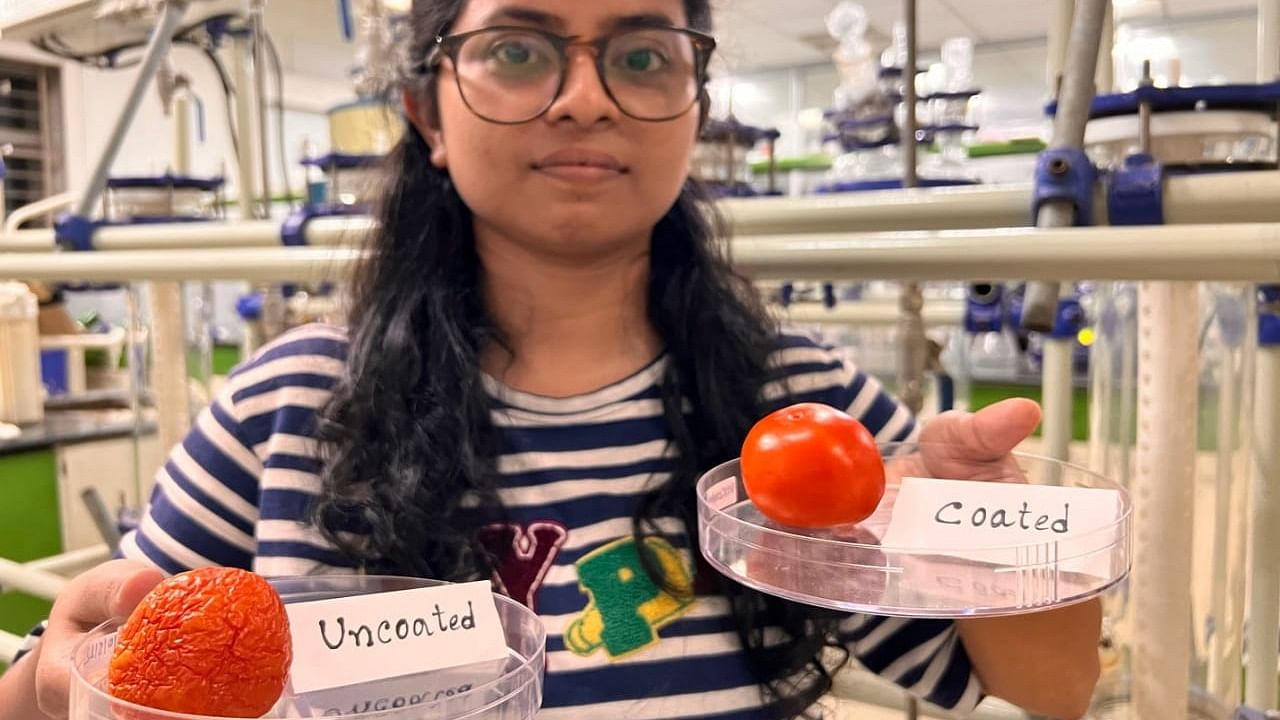
Researchers at Indian Institute of Technology, Guwahati (IITG) on Monday announced that they have developed an edible coating which can help extend shelf life of fruits and vegetables up to two months.
The IIT-G on Monday said the coating material, which will prevent wastage, was tested on vegetables such as potato, tomato, green chilis, strawberries, Khasi mandarin, apples, pineapples, and kiwifruits were found to keep these items fresh for nearly two months.
Announcing the development, the IIT Guwahati said they believe that the development could help the country meet the Sustainable Development Goal (SDG) target 12.3 that is aimed at reducing food losses along the production and supply chains, including post-harvest losses.
"According to the Indian Council of Agricultural Research, between 4.6 per cent and 15.9 per cent of fruits and vegetables go waste post-harvest, partly due to poor storage conditions. In fact, post-harvest loss in certain produce items like potato, onion and tomato is as high as 19 per cent. This results in high prices for this highly consumed commodity,” said Vimal Katiyar, a professor of Chemical Engineering at IIT Guwahati, who was part of the research team.
The team included Katiyar, Vaibhav V. Goud, another professor in the department of Chemical Engineering and five research scholars, Kona Mondal, Tabli Ghosh, Mandavi Goswami, Shikha Sharma and Sonu Kumar.
"The team used a mix of a micro-algae extract and polysaccharides to produce protective, edible films for coating on vegetables and fruits. The marine microalgae called Dunaliella tertiolecta is known for its antioxidant properties and has various bioactive compounds such as carotenoids, proteins, and polysaccharides," said the team in a statement.
"It is also used as a source of algal oil, which is used as a non-animal source of omega-3 fatty acid, and is being considered as a source of biofuel. After the oil is extracted, the residue is usually discarded," they further said.
The results of the research have been published in the prestigious journals including Royal Society of Chemistry Advances, Food Packaging and Shelf Life, Food Chemistry, IJBM and American Chemical Society’s Food Science and Technology, they said.
Katiyar said, “The newly-developed coatings can be mass-produced and are unique. They are very stable to light, heat and temperature up to 40oC, edible and can be safely eaten as part of the product formulation and do not add unfavorable properties to it. They retain the texture, color, appearance, flavor, nutritional value and microbial safety of the fruit or vegetable that has been coated, thereby enhancing their shelf life to several weeks to months”.